SMITHSONIAN LIBRARIES AND ARCHIVES
A Diary Hidden in a 19th Century Trade Catalog
Hand-written notes in the back of a cruise souvenir offer a passenger’s perspective
/https://tf-cmsv2-smithsonianmag-media.s3.amazonaws.com/filer_public/9f/af/9fafc994-fda1-42bd-ab28-91783999b4f3/northern-pacific-railway-co-page-7.jpeg)
At first glance, this trade catalog appears to be typical. It provides general information for steamship travelers. But as I turned to the last few pages, I stumbled across something unexpected. It includes a handwritten diary of a passenger.
The trade catalog is titled Over the Ocean on the Guion Line Steamship “Arizona” with Captain Samuel Brooks: A Souvenir of the Voyage (1892) by John H. Gould. It is shelved with other Northern Pacific Railway Co. catalogs in the Trade Literature Collection at the National Museum of American History Library.
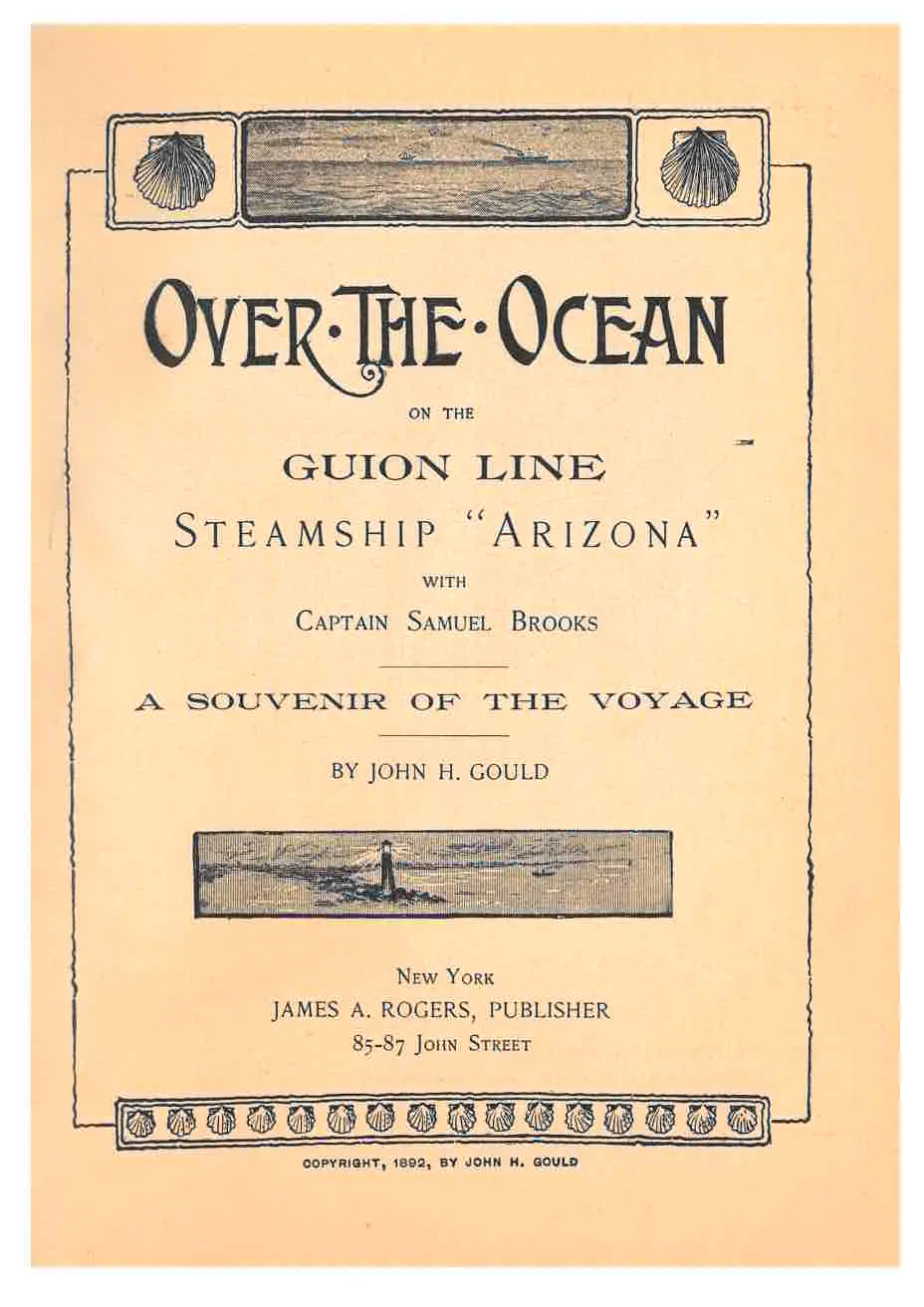
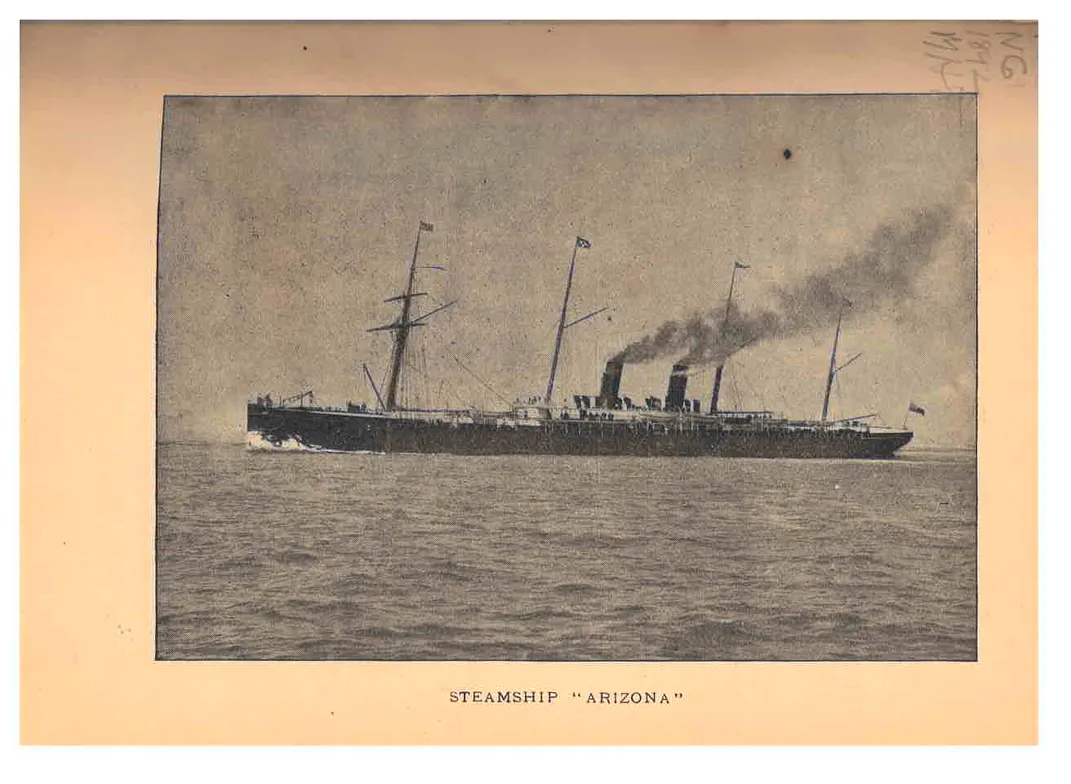
On page 17, it mentions the importance of reserving rooms early because as it explains, “the good staterooms are secured weeks and even months ahead.” It also describes the difference between inside and outside rooms. Outside rooms were lighted by a porthole and had the advantages of fresh air and ocean views while inside rooms had a skylight from the deck above.
A variety of advertisements for hotels, railroad lines, and even cameras are found among its pages. Perhaps a passenger noticed the advertisements below when making hotel reservations for New York City.
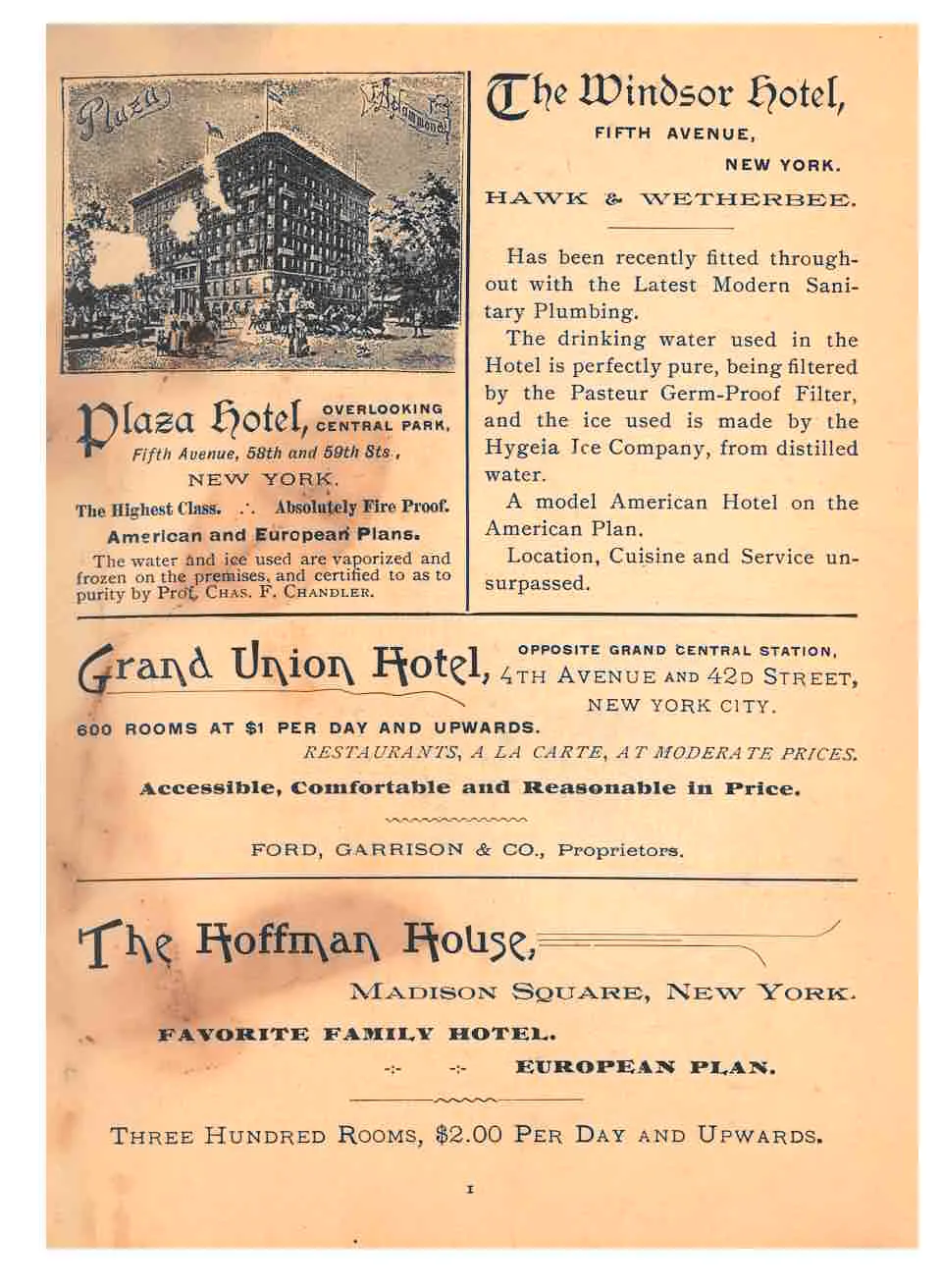
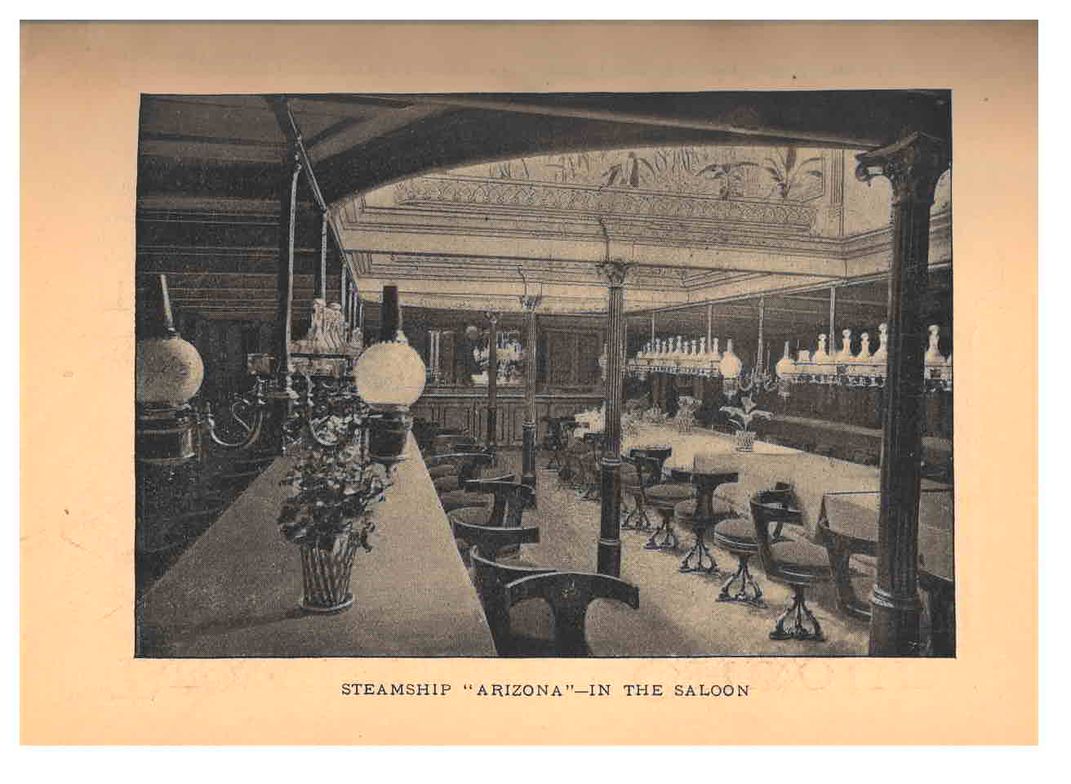
Throughout the booklet, there are also bits of lighthearted advice and suggestions to keep in mind. One section is titled “Some ‘Don’ts’ for Passengers,” and on page 40 it mentions keeping a diary, suggesting:
“Don’t forget to ‘keep a diary;’ the leading publishers may be after it one of these days, and a blank is provided in this book.”
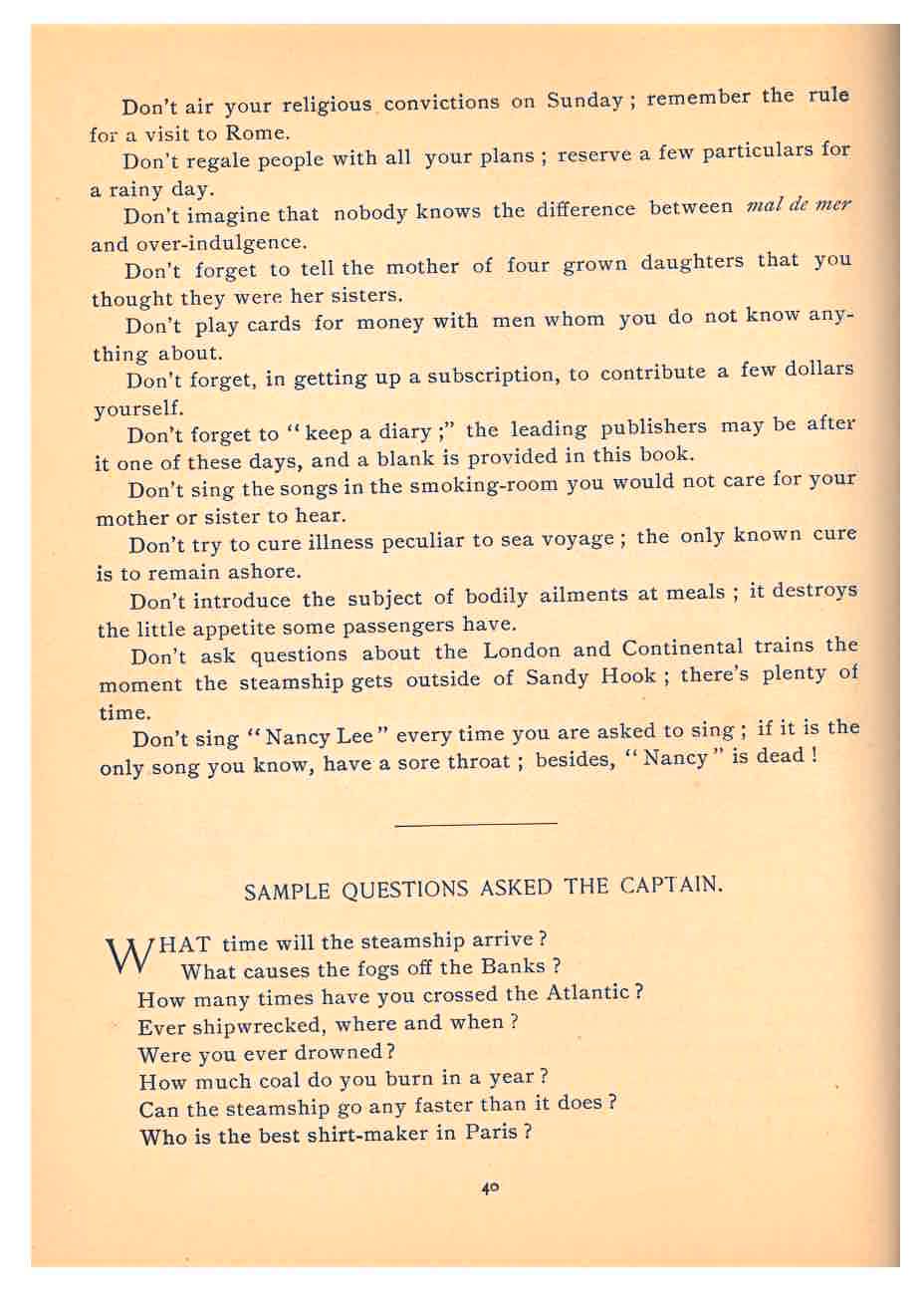
And indeed, one passenger kept a diary on the blank pages provided at the end of the catalog. That passenger’s voyage began on Saturday 10/15. Though the year is not recorded, it most likely took place in October 1892, as the booklet was published that year. The diary’s author appears to have departed from Liverpool in “pouring rain” for a two-week voyage.
Sunday 10/16 was described as a “clear day” and they “got to Queenstown about 8 am-beautiful harbor…” The third day, Monday 10/17, was “a pleasant day though somewhat overcast slight-sprinkle of rain…” The writer notes that they spent time sitting outdoors and reading on deck.
Earlier in the catalog, reading was suggested as a possible activity for passengers. However, the “Hints for Ocean Travelers” section cautions them by warning, “it is surprising how soon one gets tired of a novel on shipboard.” Other suggestions for activities included card playing, checkers, dominoes, knitting, crocheting, and storytelling.
That same day, the writer also mentions passing a ship in the distance. Perhaps the handy chart, shown below, was used to identify the ship. According to this catalog, each transatlantic passenger steamship line could be identified by their house flag, the colors on the ship’s funnels, and their night signal.
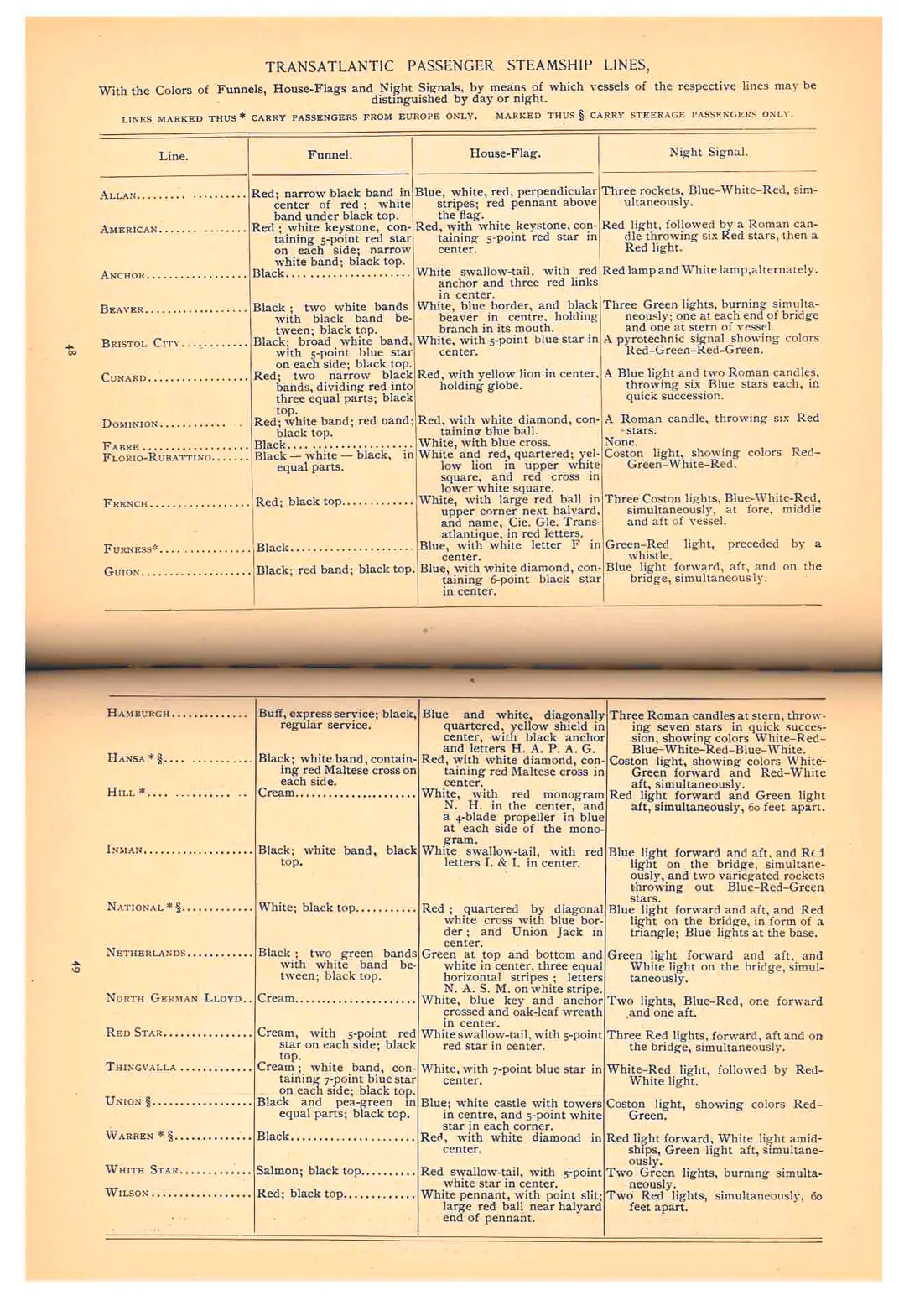
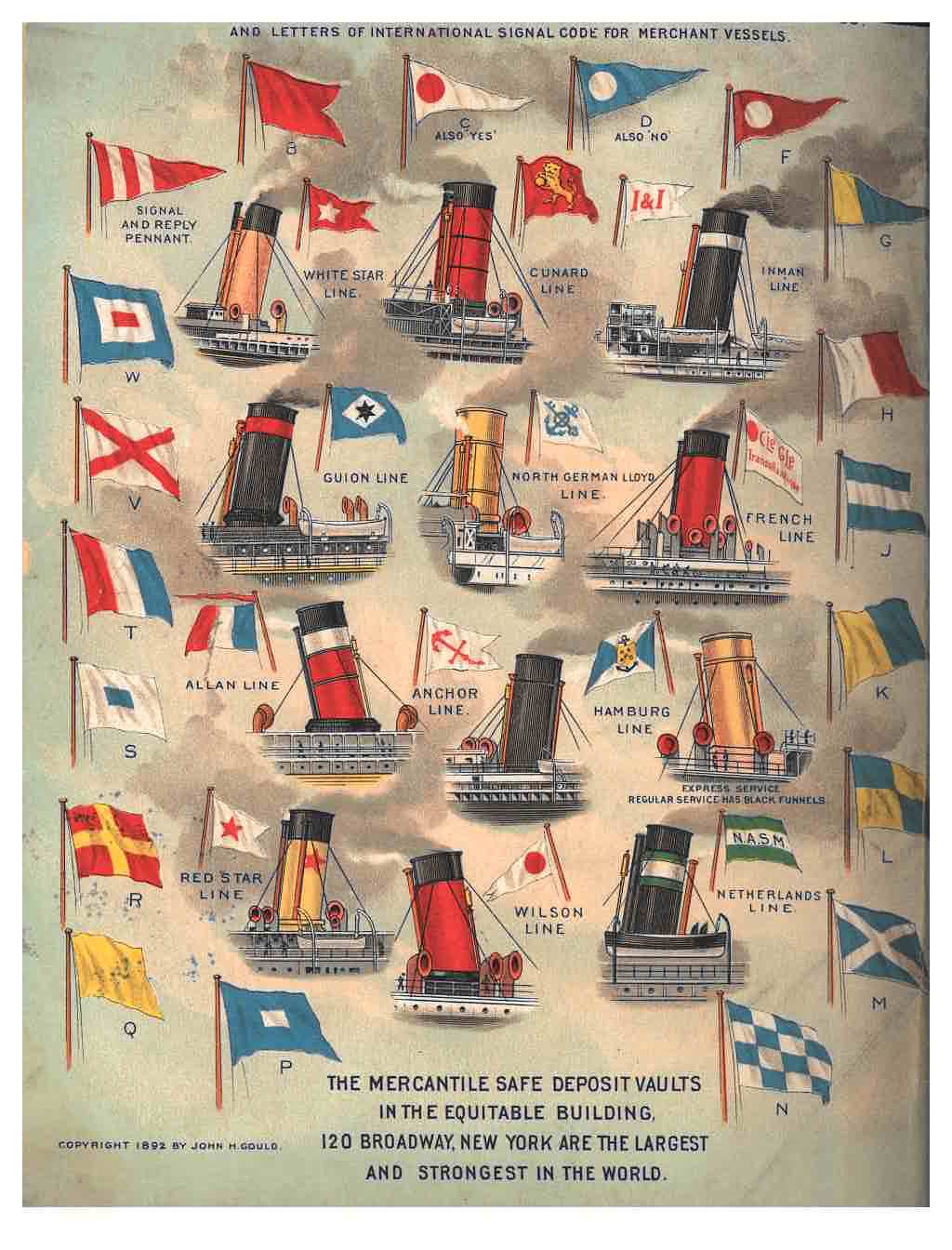
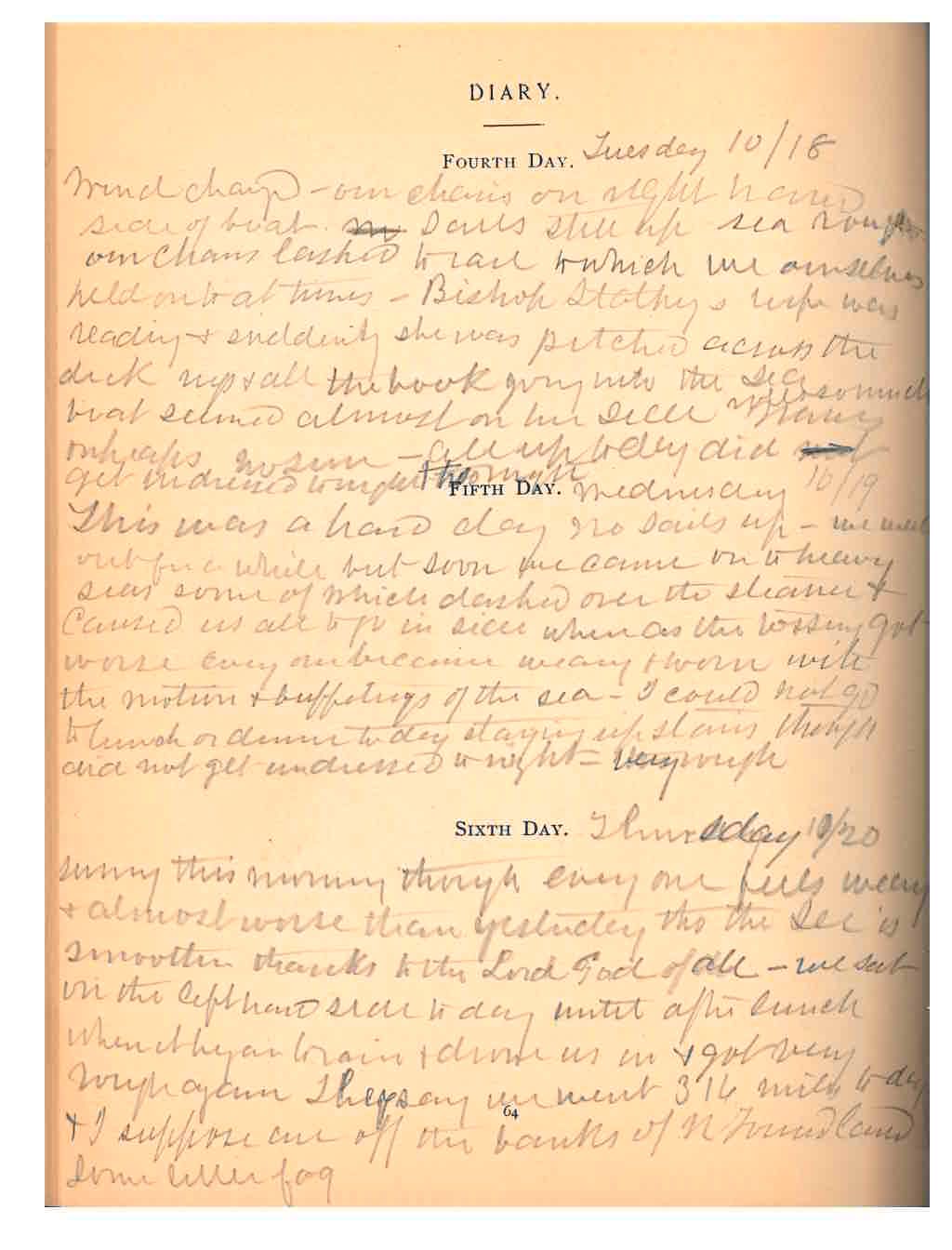
The next day does not sound much better as the entry for Wednesday 10/19 begins, “This was a hard day…” Apparently, they went out on deck but soon moved indoors when they encountered “heavy seas.” The writer explains that this caused them to go inside “where as the tossing got worse every one became weary + worn with the motion…”
Thursday 10/20 turned out to be a sunny morning “though every one feels weary + almost worse than yesterday tho the sea is smoother…” Unfortunately, the smooth seas did not last long because the entry explains that after lunch, it began to rain causing them to go inside as it “got very rough again.”
The following day, Friday, appears to have been yet another difficult day. The entry ends with the statement, “boat pitching + rolling water dashing all over her decks no one outside.” Saturday, was described as “cloudy and still rough sea but not so bad as yesterday” while Sunday turned out to be “a bright sunny day for which we are thankful…” Sunday’s entry ends with, “sea smoother but strong head wind + spray.”
The final diary entry is Monday which was the tenth day of the voyage. That day is described as “Clear” and mentions that most people went out onto the deck. It also notes, “we suppose we shall get in tomorrow…”
Over the Ocean on the Guion Line Steamship “Arizona” with Captain Samuel Brooks: A Souvenir of the Voyage (1892) by John H. Gould and other trade catalogs by Northern Pacific Railway Co. are located in the Trade Literature Collection at the National Museum of American History Library.

